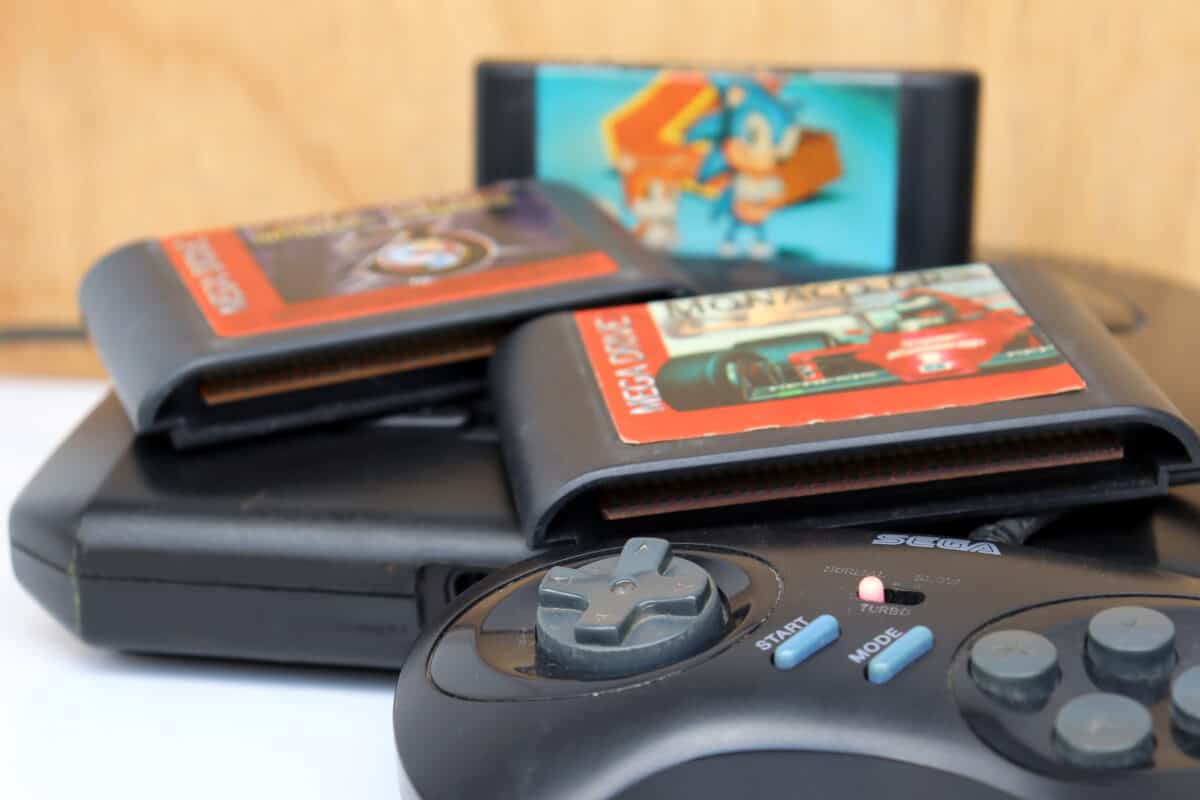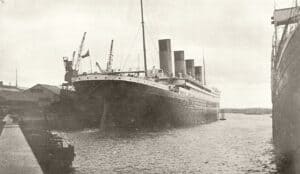You may have heard Sega failed in the console wars against Nintendo and Sony. But do you know why?
It wasn’t because they made inferior hardware or had a poor game lineup. In fact, Sega’s failure was primarily due to an inferior business strategy. Here’s the real story of what happened.
Quick Facts
- Year Founded
- 1951
- Founders
- David Rosen, Ray LeMaire, Richard Stewart
- Industry
- Video Games
- Headquarter
- Shinagawa City, Tokyo, Japan
- Key People
- Haruki Satomi (Chairman and CEO), Shigeru Yamashita (Vice Chairman), Yukio Sugino (President and COO), Ian Curran (President, Sega of America), Gary Dale (President, Sega Europe)
- Notable Products
- Sonic the Hedgehog, Total War, and Yakuza
- Website
- https://www.sega.com/
Facts Box
| Year Founded | Initially founded in 1940 Moved to Japan in 1952 |
| Founders | Martin Bromley Richard Stewart Nihon Goraku Bussan 2 |
| Industry | Entertainment, gaming |
| Headquarters | Shinagawa, Tokyo |
| Key People | Haruki Satomi (Chairman and CEO) Shigeru Yamashita (Vice Chairman) Yukio Sugino (President and COO) Ian Curran (President, Sega of America) Gary Dale (President, Sega Europe) |
| Notable products | SG-1000 Master System Genesis Mega Drive Game Gear Sega Saturn and 32X Dreamcast |
| Website | https://www.sega.com |
The History of Sega: What to Know
Sega has a long and storied history, dating back to 1940. That’s when the company was founded as Standard Games, a coin-operated game company based in Hawaii.
While offering games and machines for military bases, the firm was known as Standard Games. In 1952, Sega moved to Japan and was renamed as the Service Games of Japan. After a few years, Service Games of Japan, combined with Rosen Enterprises and Sega Enterprises, was founded.
Back in 1980, Sega came up with its first console system, titled the SG-1000. The console was a massive success and generated over $200 million.
Over the next few years, the company witnessed many changes in its structure and ownership but remained constant. Today, we remember Sega as one of the leading video game companies in the world.
The Founding of Sega: How It Happened
Sega is a household name today, known for iconic video game franchises such as Sonic the Hedgehog and Streets of Rage. But, the company had humble beginnings, traced back to the 1940s with its founding by Nihon Goraku Bussan.
Nihon Goraku Bussan was an importer of coin-operated arcade games to Japan and a manufacturer of slot machines and jukeboxes. However, in 1966, the company began developing its arcade games with Periscope, which was a surprise success. This led to even more arcade machine development, solidifying Sega’s place in the gaming industry.
In 1969, American conglomerate Gulf and Western Industries acquired Sega, but its CEO was still Rosen, who stepped down in 1982. In 1974, “Sega Enterprises” was created by the Gulf and Western and launched its first game, the Pong-Tron, in 1973.
From there, Sega continued to grow and eventually became the gaming powerhouse we know today. Though its focus has shifted from arcade machines to home consoles, Sega remains an essential player in the gaming industry—thanks partly to its early foray into arcade game development.
Sega’s History
In 1969, Sega was sold to the American conglomerate Gulf and Western Industries, although Rosen remained CEO.
In 1974, Gulf and Western made Sega Enterprises, Ltd., a subsidiary of an American company renamed Sega Enterprises, Inc. Sega released Pong-Tron, its first video-based game, in 1973.
Despite late competition from Taito’s hit arcade game, Space Invaders, in 1978, Sega prospered from the arcade game boom of the late 1970s, with revenues climbing to over US$100 million by 1979. By 1981, video games accounted for 60 percent of Sega’s income.
Sega was on a roll in the late 1970s and early 1980s. Not only were they one of the top five arcade game manufacturers in the United States, but they also acquired Gremlin Industries and Esco Boueki. This placed them in a strong position to continue growing their business—thanks in part to their acquisition of Gremlin Industries and Esco Boueki.
1984 was a big year for video game company Sega. Not only did it open its European division of arcade distribution, but it also re-entered the North American market. And its debut games in the region were nothing short of hits. Hang-On became so popular that Sega struggled to keep up with demand, while Out Run became the best-selling arcade cabinet.
Sega released many consoles during its growth. From the earliest SG-1000, launched in 1983, to Sega’s Genesis consoles and Sega CDs, the game company had its moments where it thrived, and those fantastic consoles were very popular among gamers.
However, that didn’t last forever, because other competitors such as PlayStation and Nintendo eventually took the lead.
Below, we take a look at the two major consoles Sega released and why they failed, causing the downfall of Sega.

©Brenda Rocha – Blossom/Shutterstock.com
Sega Saturn
In 1994, Sega began work on Genesis’ successor, the Sega Saturn. The company had two goals in mind: to create a less expensive entry into the 32-bit era and to develop a system that would be compatible with Saturn.
To achieve these objectives, Sega released the 32X, an add-on for Genesis that allowed it to play 32-bit games. The 32X was not as powerful as the Saturn, but it was significantly cheaper, making it an attractive option for budget-conscious gamers.
However, the 32X was incompatible with the Saturn, meaning gamers who wanted to play both Genesis and Saturn games had to purchase two separate consoles. Ultimately, the 32X was a commercial failure, and Sega eventually discontinued it.
However, the company’s efforts to create a budget-friendly 32-bit console laid the foundation for its success in the 64-bit era with Dreamcast.
Dreamcast
The Dreamcast was Sega’s last home video game console. It was released in Japan on November 27, 1998, and quickly sold out its stock of 150,000 units.
The Dreamcast was notable for being the first console to include a built-in modem for online gaming. For those lucky enough to experience it, the Dreamcast was truly ahead of its time.
However, despite its innovative features and strong start, the Dreamcast was ultimately unable to compete against its rivals, the Sony PlayStation 2 and the Nintendo Gamecube.
As a result, Sega ceased production of the Dreamcast in 2001, less than three years after its launch. Despite its short lifespan, many gamers fondly remember the Dreamcast.
Why Sega Failed Spectacularly: the Primary Reasons
Although they had a huge head start to market and developed some very creative games, Sega’s lack of financial muscle caused its demise as a gaming company.
Their main competitor, Nintendo, didn’t have even a fraction of Sega’s budget and still quickly became the top video game company in the world.
One reason for Sega’s lack of success was their rush to market. They released their first console, the Master System, before it was ready, and it wasn’t well-received by gamers.
Furthermore, they failed to learn from their mistakes and released the Sega Genesis and Saturn without addressing the main criticisms of their Master System. As a result, Sega could never gain a solid foothold in the video game market and eventually had to abandon its hardware business altogether.
Sega tried too hard to compete with rival brands instead of focusing on their users and growing their brand.
Complicated for Developers
In 1994, Sega and Sony vied for a spot in the video game console market.
Sega launched the Sega Saturn, while Sony introduced its PlayStation. At this point, Sony was a fast mover in the market, and its console had better graphics than Saturn.
However, Sega’s console was more complex hardware-wise, and the company provided poor support to developers. This lack of interest from developers made it difficult for Sega to keep up with Sony, and the PlayStation eventually became the more popular console of the two.
Too Slow-Paced
Sega introduced the Dreamcast in 1998. It was the most powerful console that Sega had made and was ahead of its time.
Sega tried to improve its condition in the market with the launch of the Dreamcast, but it was too late. Sega has already lost its reputation and trust in the market.
The Dreamcast was creative and had many innovative games, but it died too soon. Eventually, PlayStation 2 and GameCube came out in the market and washed Sega out.
In 1998, Sega made another groundbreaking move with the release of the Dreamcast. The Dreamcast was the most powerful console Sega had made at the time and featured some amazing games. Unfortunately, Sega’s reputation had already been smudged by the poor performance of its previous consoles, and the Dreamcast was unable to turn things around.
By 2001, Sony’s PlayStation 2 and Nintendo’s GameCube were on the market, and Sega was forced out of the console business entirely. While it’s a shame that the Dreamcast didn’t live up to its potential, it’s still fondly remembered by those who were able to experience it.
No To Dreamcast
Back in the late 1990s, game developers were in a state of flux. They had been creating games for personal computers for years, but as the market shifted towards consoles, they were forced to adapt. While some developers embraced the change and began developing games for the new generation of consoles, others resisted.
Among those who resisted was Electronic Arts (EA), one of the time’s largest and most successful game developers.
When Sega’s Dreamcast console was released, EA didn’t create any games for it. This was a massive blow to Sega, as EA’s support was essential for the Dreamcast’s success. In the end, the lack of EA’s support was one of the factors that led to the Dreamcast’s demise.
While the Dreamcast was a sales powerhouse when it was first released, this was more due to the strength of the Sega brand rather than any absolute loyalty from consumers. This lack of brand loyalty quickly became evident when the console was hit hard by piracy. The GD-ROM format was complicated, and pirated games quickly became rampant. This, combined with the announcement of the PlayStation 2, led to a mass exodus from the Dreamcast.
The PS2 was marketed better, looked more stylish, and was generally more consistent than the Dreamcast. As a result, the PlayStation 2 handily outsold its competitor and cemented Sony’s place as the industry leader. Compared to Dreamcast, the PS2 sales were tremendously good. The Dreamcast was a sinking ship, and Sega went with it.
In the end, Sega’s only focus was to compete with its rivals instead of fulfilling the user’s demand. This led to their downfall, and the company couldn’t keep up with Nintendo and ultimately failed in its attempt to conquer the gaming market.
The Major Blow
When the SNES was launched in the market, Sega came up with Genesis.
Later, Sega launched the 32X, a risky business decision. Then again, they took the same step and made the CDX. Then, the final blow for Sega was the release of Saturn.
Wrap Up
Sega failed to appeal to their customer’s primal needs, underestimated the competition, and allowed themselves to get bogged down in details that didn’t matter. Thankfully, you know better from examples and can apply these lessons to your business ventures.
What do you think was Sega’s biggest mistake?
Up Next
- The Real Reason Windows Phone Failed Spectacularly
- The Real Reason Nokia Failed Spectacularly
- The Real Reason Fire Phone Failed Spectacularly
The image featured at the top of this post is ©TK Kurikawa/Shutterstock.com.



